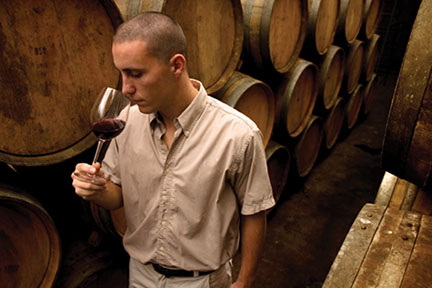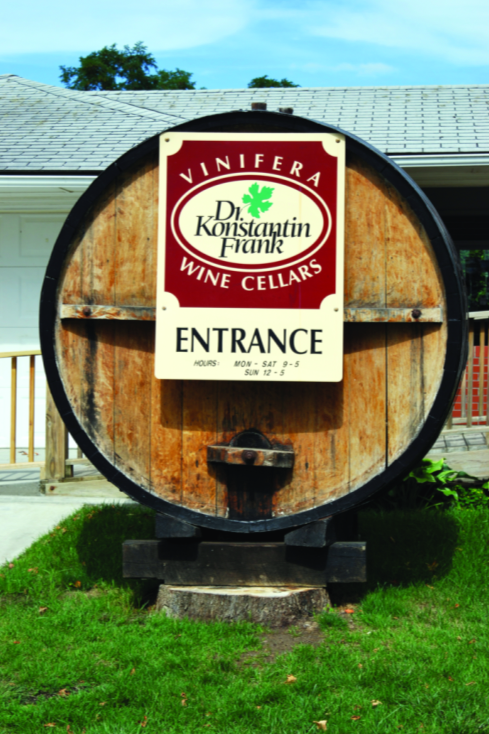A big first step towards troubleshooting and ultimately improving your winemaking is being able to evaluate your own wines and identify deficiencies and strengths, as well as flaws and faults. There is nothing better than experience with this . . . and we’re not talking about quantity here . . . it’s about the variety. Sure, drinking those nice bottles of wine from your favorite wine shop may be greatly enjoyable experiences, but they may not be the best learning experience for winemaking.
Get Out There
One of the best things to do is to find bottles, either from local wineries or favorite wine shops, that are off the beaten path. Unheard of grape varietals or regions or styles allow your palate to expand in ways that sticking with your 10 favorite wines will never allow. I had a girlfriend that drank New Zealand Sauvignon Blancs for six months of the year and Oregon Pinot Noirs the other six. Sorry . . . but I couldn’t take it. Sure, I enjoy both, but variety is the spice of life.
If you are lucky enough to know other home winemakers or can find a club in the region, there is an amazing opportunity to explore sampling wines in a group. Whether exploring commercial wines or the homemade variety, there is often a wealth of knowledge found among home winemakers. Classes in enology or sommelier programs will also assist with exploring various wine characteristics. For more on these opportunities to gain tasting knowledge, check out Bob Peak’s “Techniques” column in the October-November 2023 issue: winemakermag.com/technique/tasting-critically
Time For Some Tasting
Obviously, tasting and sharing is just about every winemaker’s favorite part. You’ve spent months toiling to get to this point, the wine is now bottled and it’s time to enjoy all those efforts. First, I hope you’ve taken good notes throughout the winemaking process and have those on hand. Working faults backwards is a very important step in the learning process. Also, be sure to wait at least a month post-bottling before tasting anything critically. Why? There is a phenomenon known as bottle shock that can hit newly bottled wines that has to do with the little amounts of oxygen that were absorbed during the bottling process. It almost always resolves on its own but note that minimizing oxygen uptake during bottling is crucial for longer-term success of the wine as well as avoiding bottle shock.
For wine tastings, glassware should be uniform and most definitely transparent. A box of cheap restaurant-style wine glasses is great to have when trying to evaluate in a group for side-by-side tastings. Open bowl designs (where there is only a little tapering back inwards) is my preference to get the most from the aroma so your nose is really getting involved. I prefer stemless glasses; and since they’re lower profile, it makes them easier to store away. But that is a minor point.
Temperature for the wine is dealer’s choice, but just recognize that chilling white wines suppresses the aromatic components that may give good indications of things like excess sulfides (rotten egg), diacetyl (buttery), or acetaldehyde (Jolly Rancher green apple). You may say, “Wait, don’t I want to suppress those?” Well, yes, during the winemaking process you’ll want to, but for troubleshooting your wine you don’t want to.
I always prefer sampling with at least one commercially produced wine in the style that I was going for, but more typically three wines. This can really dig into where lies a wine’s deficiencies and strengths as well as smelling or tasting those flaws. I like to keep the talk to a minimum until after everyone gets their full impression of each wine. The power of suggestion is strong, so by allowing everyone to come up with their own thoughts and opinions on each wine before hearing from others allows for more unique feedback. Make sure to remind everyone that there is no wrong opinion. Also, having a wine aroma wheel on hand can be a helpful tool when trying to put your finger on that ethereal note you’re picking up on the nose.
Palate Cleansers
It’s important to keep things on hand to cleanse everyone’s palates between tastings. Obviously having water available to everyone is going to be the first thing you’ll want. When tasting red wines, the tannins can be a challenge when resetting your palate. Plan on a little charcuterie board with things like roast beef, carrots, crackers, and some fruit like apples and pineapples.
The fats found in a neutral tasting meat like roast beef are great for knocking tannins out of the mouth and resetting your tastebuds. Some carrot batons are easy and really do a good job keeping your mouth fresh. Crackers are pretty much a necessity, but just make sure they are unflavored. Keep the ingredients list on the cracker box as short as you can. We don’t want the food to influence the wine. Fresh apple and pineapple are well-known palate cleansers when paired with wine.
Finally, to reset everyone’s sinuses after a tasting, a little bag or cup of coffee beans (or even fresh-brewed coffee) make for a great aromatic reset. Another one that I found to be a great sinus refresher is an IPA beer for red wines and stout or porter for white wines. The aromatics from the beer seem to engage a whole different set of receptors and allow you to seemingly have a blank canvas when returning to the wine.






